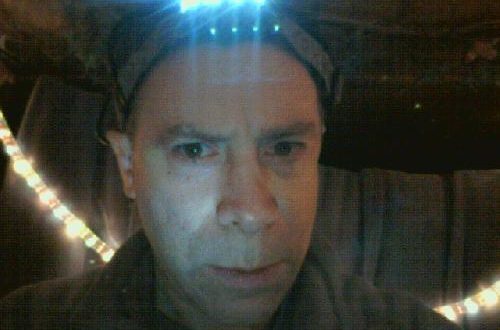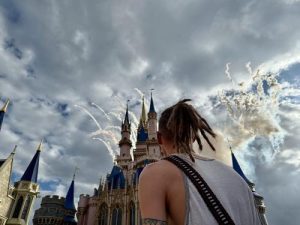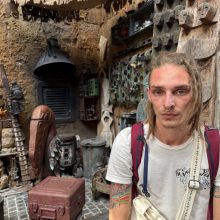This card is called “casting light on obsessions,” not “eradicating obsessions,” because properly related to obsessions can lead to creative breakthroughs. Being in the grip of an obsession is like wrestling with an angel. The average person gets pinned to the mat because he doesn’t have his obsession, his obsession has him. However, a mutant with a sufficiently strong commitment to consciousness and the creative muse will force blessings from the angel.
Within the particularities of your personal obsessions are collective obsessions. John is obsessed with Jane, but that is just an individual permutation of the collective romantic obsession, and even that pervasive obsession is a refraction of the even more universal obsession with finding wholeness from the outside. Since your particular obsession is built on collective obsessions — obsessions that have consumed the souls of so many before you — you are wrestling with an entity that may have the psychic force of billions behind it. So an obsession is like wrestling with an angel, but the angel is not necessarily a pale, slightly anorexic, winged androgyne. More often, the angel of obsession is like a six-billion-kilo sumo wrestler covered with Vaseline. There is a reason why people talk about being “in the grip of an obsession.”
Wrestle out the blessings by shining your brightest lights on the obsession. Force it to be a teacher, not merely a tormentor. Learning about your obsession can teach you things of inestimable value, and what you learn may also help you to help some of those who are similarly afflicted and blessed. At the core of obsessions (if you can get in that deep) are diamonds formed by time, pressure, and heat. At the core of obsessions are archetypes, which all have a light and a dark side. If you’re unaware of the archetypes at the core of your obsessions, you will remain lost in deep, ever-twisting rabbit holes without a flashlight or compass.
(see the introduction to archetypes below)
Obsessions are two-faced gods. One face is angelic, and the other demonic. If you shine the right lights on an obsession and learn to relate to it in a life-enhancing way, you see the angelic face. If you let the obsession work in the darkness, however, tragedy is the best you can hope for. Worse than tragedy is that you aren’t there anymore — you’ve been hollowed out and are now one of the many hungry ghost personifications of the collective obsession, a ring wraith searching across wastelands for the Precious or filled with collective psychosis seeking to persecute the other who carries your shadow.
Consider this an auspicious time to summon your will to consciousness and cast light on your obsessions.
General advice on obsession management:
A Guide to the Perplexed Interdimensional Traveler
For advice on living and working with creative obsessions see:
The Path of the Numinous — Living and Working with the Creative Muse
If your obsession is romantic I strongly recommend reading all of the following:
Stop the Hottie!
Lessons for an Entity Incarnating as a Mammal
Challenging Thoughts on Love
Casting Precious into the Cracks of Doom — Androgyny, Alchemy, Evolution and the One Ring
If your obsession is with your body image, read the following:
Beauty in the Eye of the Phase Shifter
The Glorified Body…
If your obsession is money, debt or wealth read:
Green Energy Vortex…
and Resource Fluctuations Happen
If your obsession is also an addiction:
I.U.I. Incarnating under the Influence in a Polywater World
At the core of all obsessions are archetypes. My book, Crossing the Event Horizon Human Metamorphosis and the Singularity Archetype, introduces archetypes as follows:
The Archetypes of the Collective Unconscious
Jung and his colleagues have provided us with definitive evidence of a collective unconscious. From this collective layer of the unconscious emerge the great, primordial images Jung referred to as the “archetypes.” Archetypes are “innate universal psychic dispositions that form the substrate from which the basic themes of human life emerge.”5 Across cultures and periods, we find endless variations of these archetypes, such as the Self, Persona, Shadow, Hero, Great Mother, Trickster, Devil, etc. The archetypes may manifest in anyone but often show up most vividly in the fertile psyches of artists, poets, mystics, writers, shamans, and prophets. Through such individuals, the archetypes become myths and diffuse throughout a culture.
5 Papadopoulos, Renos, ed. “The Archetypes”. The Handbook of Jungian Psychology. New York: Routledge, 2006.
Edward Edinger, a Jungian analyst who wrote eloquently about the nature of archetypes, points out that although we can study archetypes as patterns, they are also living, dynamic agencies. Similarly, we could take a smear of human blood, dry it out on a glass slide, stain it, and illuminate it on a powerful binocular microscope stage where we could observe the structure of the erythrocytes and leukocytes. But while we’re looking at all the intriguing structures frozen in time on the glass slide, we need to also have a stereoscopic vision in which we see not only the slide but the inner reality of our bodies where blood exists as trillions of living cells pulsing through our veins and arteries. Archetypes are not merely things we observe. They are living agencies as active, pulsing, and alive within our psyches as the blood that is, pulsing and alive, coursing within our bodies. Edinger reminds us that the archetype,
“is a living organism, a psychic organism that inhabits the collective psyche. And the fact that an archetype is both a pattern and an agency means that any encounter with an archetype will have these two aspects.
“As a pattern, we can encounter an archetypal reality and speak about it as an object — an object of our knowledge and understanding. But as a dynamic living agency it appears to us as subject, as an entity like ourselves with intentionality and some semblance of consciousness.”
Jung, in his book, Answer to Job, describes the archetype as follows:
“They are spontaneous phenomena which are not subject to our will, and we are therefore justified in ascribing to them a certain autonomy. They are regarded not only as objects but as subjects with laws of their own. […] If that is considered, we are compelled to treat them as subjects; in other words, we have to admit that they possess spontaneity and purposiveness, or a kind of consciousness and free will.”
Jung rejected the idea that the human psyche was born as a blank slate, a smooth topography waiting to be carved by the forces of outer conditioning. Instead, he envisioned the emerging psyche as a landscape riddled with dry riverbeds shaped by the dynamism of the collective psyche operating across the millennia. When new vitality appeared, it would most likely flow into these established channels. This is why people from the most diverse cultures would all envision Heroes, Tricksters, Great Mothers, and so forth. Archetypes are the essential, primordial images stored in the hologram of the collective psyche. Each individual refracts these primordial images a bit differently, but the essence is still quite apparent.
Jung points out: “The hypothesis of a collective unconscious belongs to the class of ideas that people at first find strange but soon come to possess and use as familiar conceptions.”
Jung was an empiricist, and he used empirical evidence to demonstrate the existence of the collective unconscious:
“The hypothesis of the collective unconscious is […] no more daring than to assume there are instincts. One admits readily that human activity is influenced to a high degree by instincts, quite apart from the rational motivations of the conscious mind. So if the assertion is made that our imagination, perception, and thinking are likewise influenced by inborn and universally present formal elements, it seems to me that a normally functioning intelligence can discover in this idea just as much or just as little mysticism as in the theory of instincts. Although this reproach of mysticism has frequently been leveled at my concept, I must emphasize yet again that the concept of the collective unconscious is neither a speculative nor a philosophical but an empirical matter. The question is simply this: are there or are there not unconscious, universal forms of this kind? If they exist, then there is a region of the psyche one can call the collective unconscious.”
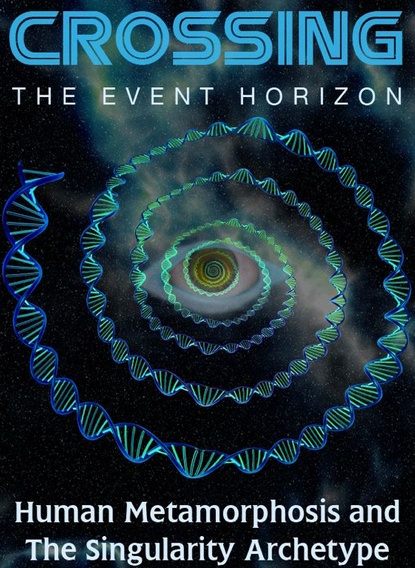
My book on the Singularity Archetype, Crossing the Event Horizon — Human Metamorphosis and the Singularity Archetype now has a second edition available free on this site.
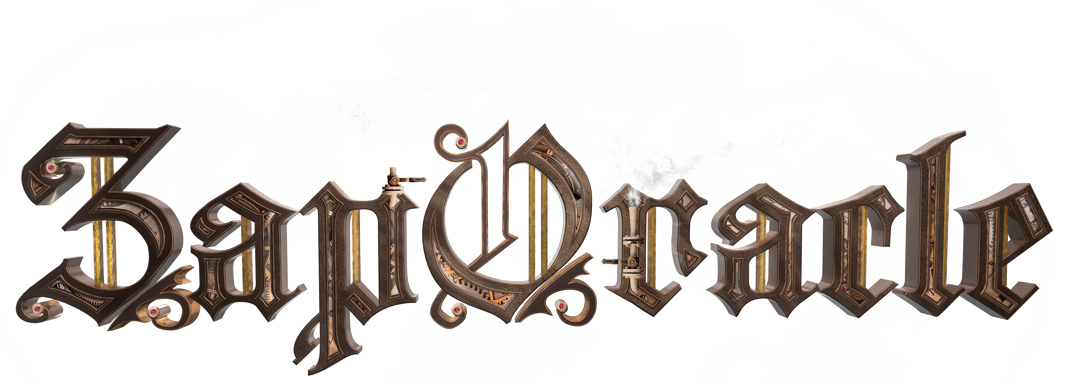 ZapOracle.com home to the free 720-card Zap Oracle
ZapOracle.com home to the free 720-card Zap Oracle

